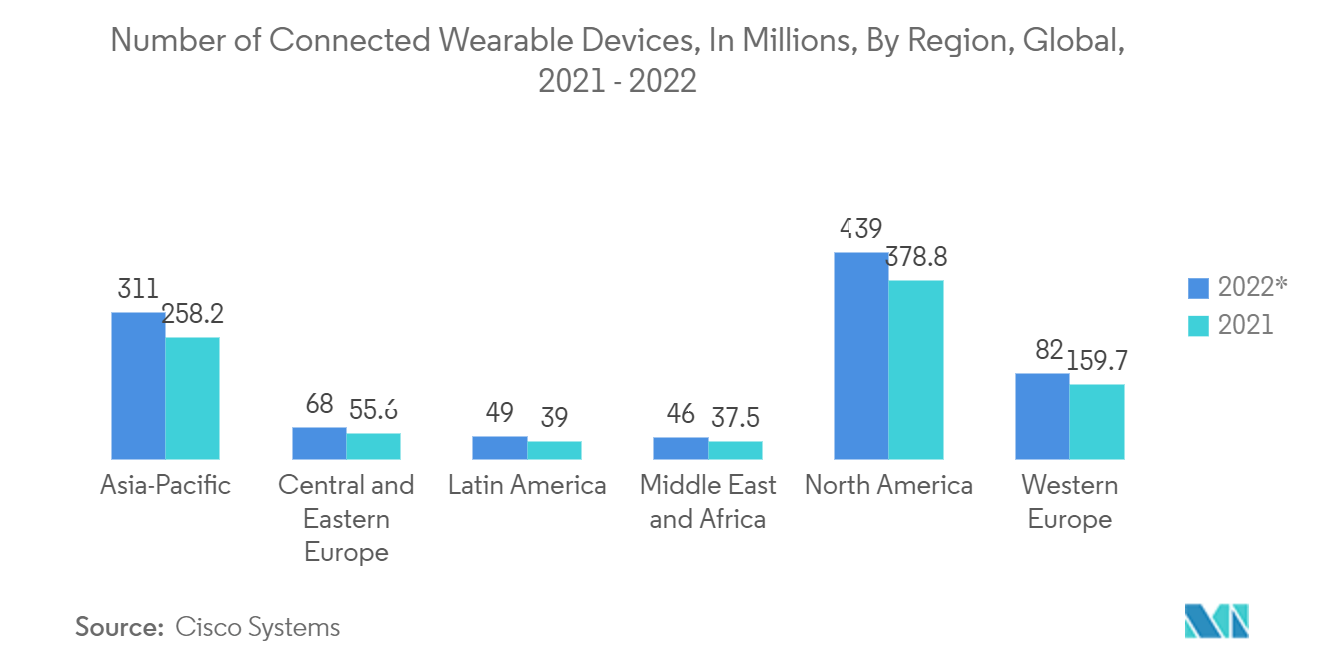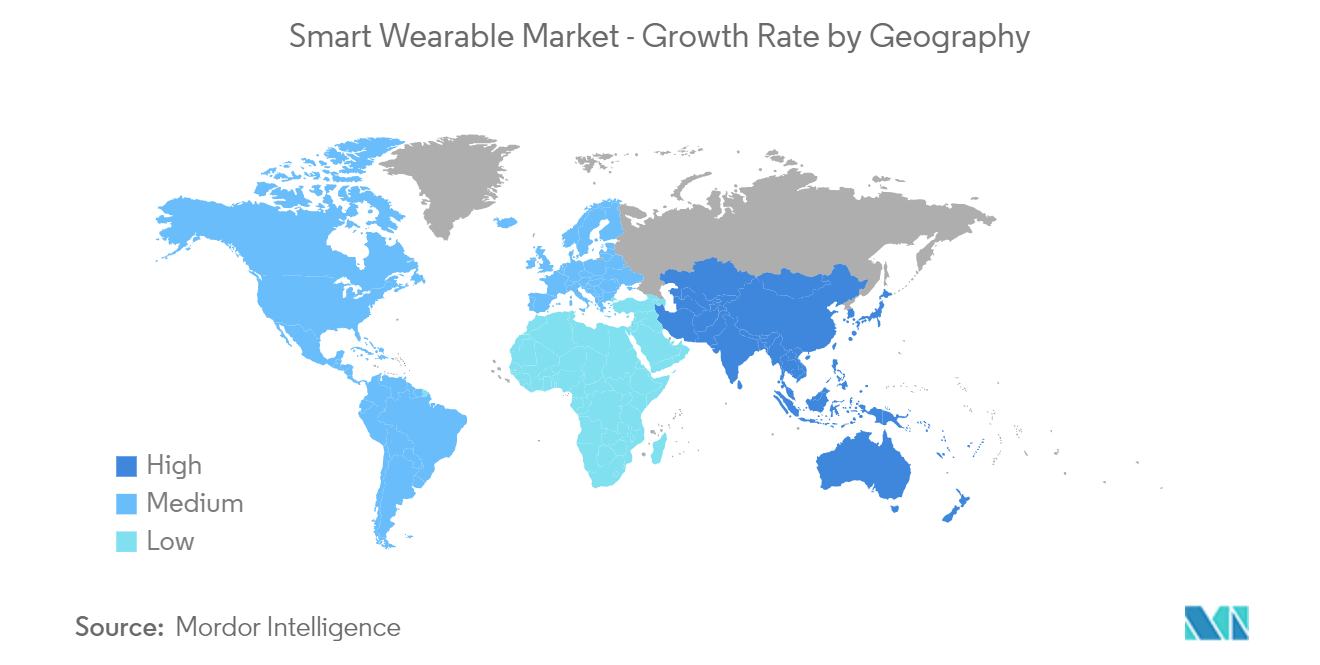Market Trends of Smart Wearable Industry
This section covers the major market trends shaping the Smart Wearable Market according to our research experts:
Head-Mounted Displays is Expected to Drive the Market Demand
- A head-mounted display is a device with a small display optic in front of one (monocular HMD) or each eye (binocular HMD) and worn on the head or as part of a helmet. These are primarily used for various purposes, including gaming, aviation, engineering, and medicine. Heads-up displays do not block the user's vision but superimpose the image on the user's view of the real world. An emerging form of a heads-up display is a retinal display that projects a picture directly on the sensitive part of the retina. However, the image appears on a screen at the user's ideal viewing distance. Still, there is no actual screen in front of the user. It includes special optics, such as modified eyeglasses that reflect the image into the user's eye. Some Head-mounted displays have motion sensors to determine direction and movement or as the interface to an immersive virtual reality application.
- The display is an integral part of the HMDs and generally is categorized into Virtual Reality (VR) and Augmented Reality (AR) devices. AR devices have a transparent display and digital information superimposed onto real-life objects. These HMDs are known as Optical head-mounted displays or OHMDs. In a VR device, the display is not transparent, and only virtual information and images are present in front of the wearer's eyes.
- Based on the functionality, processing HMDs are further categorized into Slide-on HMD, Discrete HMD, and Integrated HMD. The Slide-on HMD is the most cost-effective and accessible form of VR and consists of a smartphone holder, lenses, and some primary input. A smartphone is placed into the slide-on HMD, and the entire device is played upon the user's eyes to create the VR experience. Thus, it utilizes the smartphone for display, processing, and rotational tracking. However, some use their own IMUs instead of relying on smartphones. For instance, Samsung Gear VR utilizes its built-in IMUs.
- Discrete HMDs have a display, lenses, rotational tracking, positional tracking, audio, and advanced input, aside from processing. Thus, it requires connections to personal computers for processing. It delivers the best VR experience but is less mobile than slide-on and integrated HMD. It is also known as Tethered HMD, and some of them are Oculus Rift, HTC Vive, PlayStation VR, etc.
- Integrated HMD is the most advanced and expensive HMD and OHMD. It is an independent computing device that delivers VR or AR experiences without external hardware, such as a PC or smartphone. It contains a display, processors, and a camera and can display stereoscopic 3D images, perform complex tracking, and utilize advanced input methods. Currently, most integrated HMDs are AR OHMDs with high price points and target only business professionals. The most popular integrated HMD are Microsoft HoloLens, Google Glass, Magic Leap, etc.

Asia-Pacific to Witness the Fastest Growth Rate
- The Asia-Pacific region is expected to witness the highest growth in the smart wearable market during the forecast period. The growing electronics industry and a rapid rise in disposable income in the region are driving the smart wearable market.
- In China, the wearables market had taken a different shape, fuelled partly by the purchases of growing affluent consumers. For instance, a recent report by a government think tank in China stated approximately 80% of the smart wearable devices in the world are manufactured in the southeastern Chinese port city and manufacturing hub. According to the China Center for Information Industry Development report, Shenzhen, the base camp of many Chinese tech giants, is the most extensive R&D (research and development) and production center for smart wearables.
- In March this year, According to the Indian Cellular and Electronics Association (ICEA), the PMP rationalized the inverted duty structure to produce smart wearables. After boosting local manufacturing of mobile phones and laptop/tablet computers, the Indian government launched a new Phased Manufacturing Programme(PMP) to create wrist wearable gadgets, hearable devices, and electronic smart meters.
- Moreover, increasing awareness regarding fitness, technological advancements, and the availability of high-speed Internet connectivity are the major factors propelling smart wearable market growth in the country.


